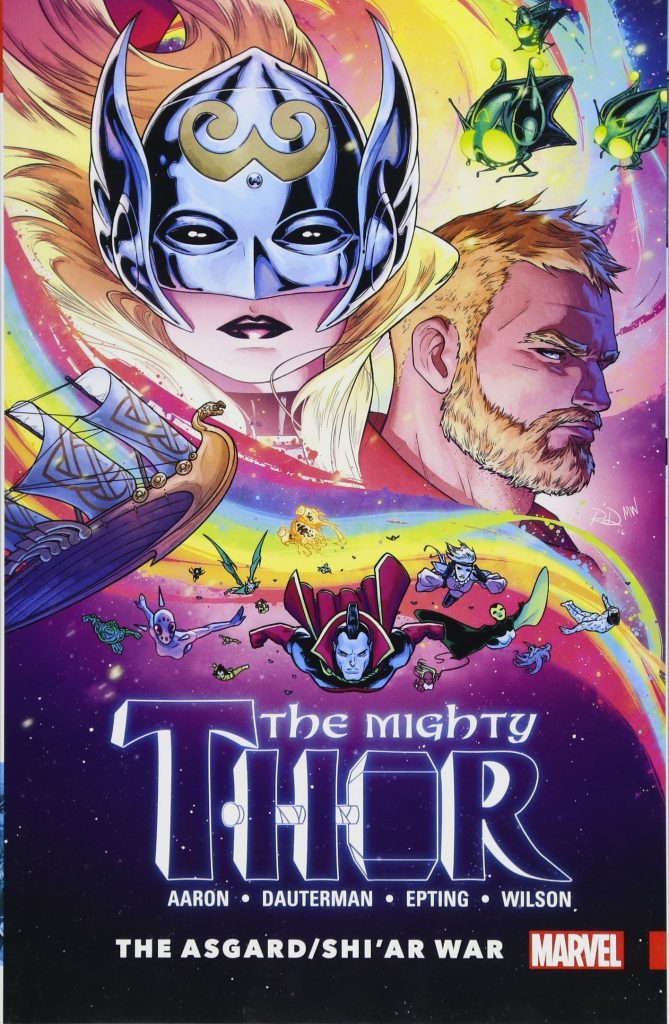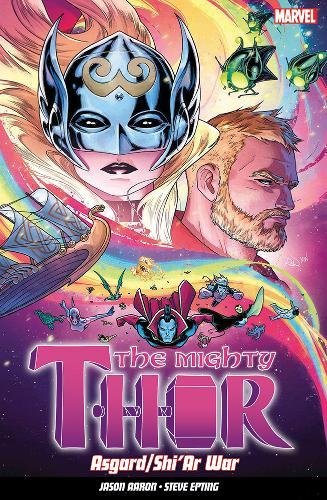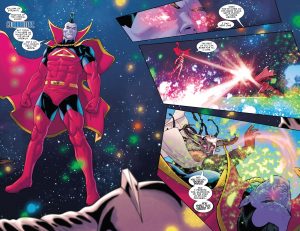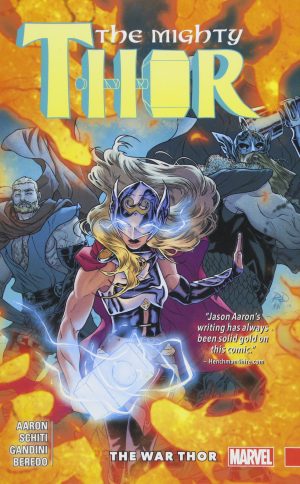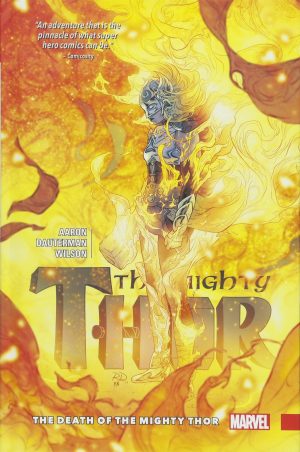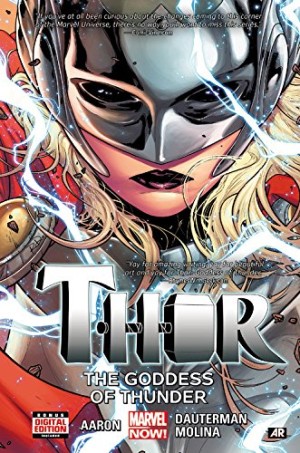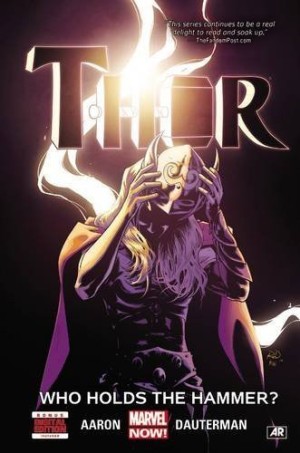Review by Karl Verhoven
A slow release plot Jason Aaron’s run since Jane Foster’s adoption of Thor’s identity is the machinations of the Dark Elf Malekith, intending to conquer the nine worlds. More were signed up to his axis of evil in Lords of Midgard, and a further couple are added here. While that plot doesn’t come to a head, there is at least an introductory skirmish over the first two chapters, Thor part of a cabal featuring representatives of each of those nine worlds. It’s nice to have them codified after all these years.
That, however, is just by means of an appetiser as the title story kicks in, and that’s a gem. Over the years Thor has probably fought an entire pantheon of mad gods, but Aaron differentiates this significantly. The first difference is incorporating the gods of the alien Shi’ar race, people with influence throughout a significant area of Marvel’s universe. They’re callous, whimsical and terrifying – “Even after thousands die tragically for no discernible reason whatsoever, even before their bodies have been buried, the survivors will flock to their shrines to worship us”. The parallels are hardly concealed. Also nice is the clash between the assorted superheroes who comprise the Shi’ar Imperial Guard and the Asgardian gods with their mystical powers. Distancing this significantly from Thor’s past fights against other mad gods is Aaron structuring the combat as if a form of ‘reality’ TV gameshow, with rounds, points and a dark sense of humour at work. As a bonus, because this is the Imperial Guard, Aaron also gets to play with Kid Gladiator again, a character he used to good effect in Wolverine and the X-Men, and he’s not the only person from that title to feature.
The sight of Viking longboats sailing through space was a visual that impacted spectacularly when first drawn by John Buscema in the 1970s, and Russell Dauterman ensures his version is equally breathtaking as the Asgardians effectively launch volleys of arrows at spacecraft. Matt Wilson’s colouring enhances Dauterman’s designs, ensuring the locations are vivid and bright, yet also alien, as the colours used aren’t those of Earth locations. Steve Epting draws the opening appearance of Malekith and allies, and while he’s good, the frustratingly indecisive nature of the story renders it a time marker.
Aaron is playing a very long game with Malekith and his plans, and the subplot of Cul replacing his brother Odin as regent of Asgard, in effect treating this incarnation of Thor as a long form fantasy novel over five volumes. However, there’s a balance to be struck between generating tension by not resolving anything, and an audience feeling they’re being strung along by investing in plots that never end. It was an undoing of Chris Claremont when writing X-Men in the 1980s and 1990s, and is wearing thin in Thor. Maybe there’ll be some movement in The War Thor. Aaron certainly knows how to generate anticipation for that with a final page appearance for one of Asgard’s most relentless foes.
This material also forms part of Thor by Jason Aaron: The Complete Collection Vol. 3.
